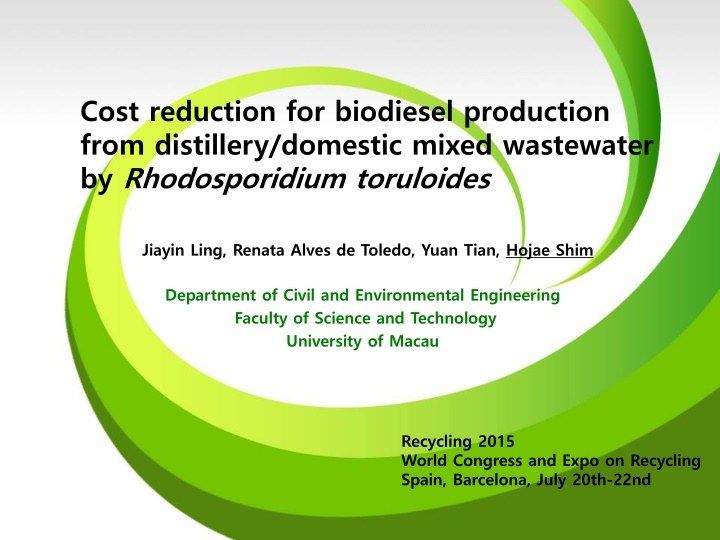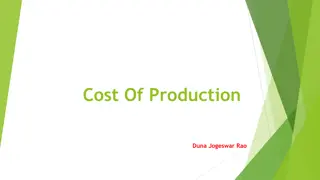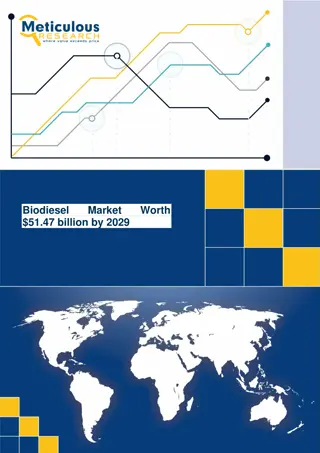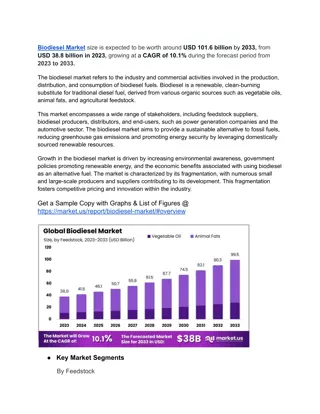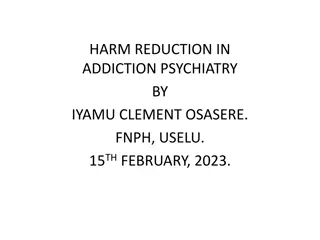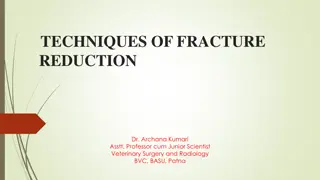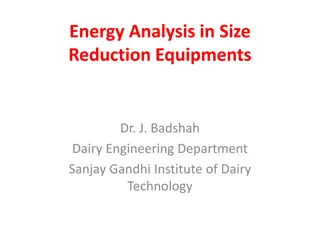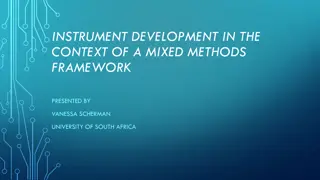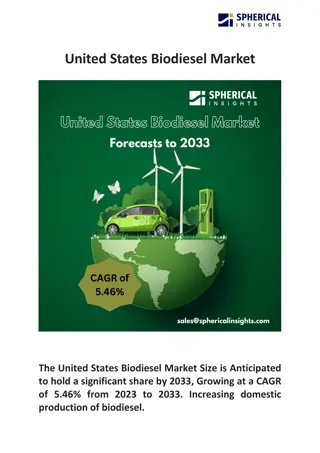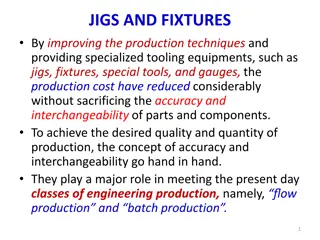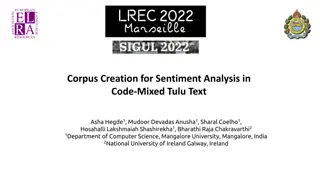Cost reduction for biodiesel production from distillery/domestic mixed wastewater by Rhodosporidium toruloides
Addressing challenges in the biodiesel industry, this study focuses on reusing spent seed culture medium for lipid production, aiming for cost-effective and sustainable biodiesel production from wastewater by Rhodosporidium toruloides.
Download Presentation

Please find below an Image/Link to download the presentation.
The content on the website is provided AS IS for your information and personal use only. It may not be sold, licensed, or shared on other websites without obtaining consent from the author.If you encounter any issues during the download, it is possible that the publisher has removed the file from their server.
You are allowed to download the files provided on this website for personal or commercial use, subject to the condition that they are used lawfully. All files are the property of their respective owners.
The content on the website is provided AS IS for your information and personal use only. It may not be sold, licensed, or shared on other websites without obtaining consent from the author.
E N D
Presentation Transcript
Cost reduction for biodiesel production from distillery/domestic mixed wastewater by Rhodosporidium toruloides Jiayin Ling, Renata Alves de Toledo, Yuan Tian, Hojae Shim Department of Civil and Environmental Engineering Faculty of Science and Technology University of Macau Recycling 2015 World Congress and Expo on Recycling Spain, Barcelona, July 20th-22nd
Introduction Shortage of fossil fuel Energy crisis & High energy prices Environmental security Biodiesel: renewable & environmentally friendly 2
Introduction Large amount of food industry wastewater generated Annual wastewater generated from brewery in China: 210,000,000 tons by 2012 Food industry wastewater is difficult to treat High COD High TN and TP Could lead to eutrophication and algal blooms Cost-effective treatment process is required 3
Some Challenges in Biodiesel Industry 1st Generation Biodiesel derived from vegetable oils crops (e.g., rapeseed, soybean) 2nd Generation Biodiesel produced using oils from non-edible plants (e.g., Jatropha, Ricinus) Crops for biodiesel production vs. Crops for food supply More cropland, less forest, more green house gas 3rd Generation Biodiesel processing oils from oleaginous microorganisms (e.g., Microalgae, Yeast) Usage of fertilizer or external carbon source required Cost of production too high 4
Introduction High lipid production in real wastewater High density culture Large amount of spent YPD medium generated (80-90% of seed culture medium) Preparation of high cell density seed culture YPD medium is rich in glucose and nutrient (Yeast extract 10 g/L, Peptone 20 g/L, Glucose 20 g/L) 5
Objectives To explore potential of reusing spent seed culture medium To assess lipid productivity and removal efficiencies for organics and produced from spent medium, compared to cells grown in fresh medium nutrients for cells 6
Materials and Methods Nutrient removal Yeast Yeast 36 h 2-5 days biodiesel lipid biomass WW YPD Reuse Nutrient removal Yeast Yeast 36 h 2-5 days Nutrient supplement 2nd YPD biodiesel WW biomass lipid Reuse Nutrient removal Yeast Yeast Nutrient supplement 36 h 2~5 days 3rd YPD biodiesel WW biomass lipid Reused YPD medium
Materials and Methods Wastewater Rice wine distillery wastewater (Foshan) Domestic wastewater (Macau) Seed Culture Medium (YPD medium) Yeast extract 10 g/L Peptone 20 g/L Glucose 20 g/L Characteristics of Wastewater SCOD (mg/L) 59,900 TN (mg/L) 2,680 TP (mg/L) 380 NH3-N (mg/L) 204 Wastewater pH Distillery Wastewater Domestic Wastewater Mixed Wastewater (1:1) 3.7 49 11 2 8 7.6 29,100 1,255 179 107 3.7 8
Materials and Methods Oleaginous Microorganisms Oleaginous yeast Rhodosporidium toruloides Experimental Setup Inoculated to 50 mL sterilized YPD fresh, 2nd, and 3r time used medium with or without nutrient supplement Cultured at 30 , 200 rpm, 36 h Harvested by centrifuging at 4,000 rpm for 10 min Dry of medium were measured weights of cells produced by each type 9
Materials and Methods Experimental Setup Different kinds of seed culture were centrifuged at 4,000 rpm for 10 min to cell density of 1.5 X 109cells /mL Inoculated in 30 mL real non-sterile distillery/ domestic mixed wastewater with initial cell density of 2 x 107cells/mL and cultured at 30 , 200 rpm, 5 day Yeast biomass was harvested by centrifuging COD, TN, TP, pH of supernatant measured 10
Materials and Methods Analytical Methods Dry weight of yeast biomass: dried at 80 to constant weight Lipid yield: acid-heat method COD, TN, TP: Hach method 11
Results Yeast cell yields from fresh and reused media Medium type Fresh Reused (2nd time) Reused (3rd time) Nutrient addition (%) Cell yield (g/L) 100 0 10 0 50 6.04 0.84 3.17 1.08 3.67 0.31 2.65 0.71 3.81 0.43 12
Results COD in Wastewater (mg/L) Time (day) 0 2 3 4 5 Fresh YPD 29,100 6,229 3,417 2,545 1,971 2nd time used YPD 2nd time used YPD with 10% nutrient supplementation 3rd time used YPD 3rd time used YPD with 50% nutrient supplementation 29,100 3,938 2,903 3,250 2,100 29,100 3,963 3,283 2,455 2,286 29,100 11,046 4,404 2,760 2,231 29,100 11,250 3,158 2,556 2,471 13
Results Total Nitrogen in Wastewater (mg/L) Time (day) Fresh YPD 2nd time used YPD 0 2 3 4 5 1,255 1,255 659 618 541 554 659 709 726 794 2nd time used YPD with 10% nutrient supplementation 1,255 634 609 694 823 3rd time used YPD 3rd time used YPD with 50% nutrient supplementation 1,255 798 624 681 675 1,255 808 577 674 641 Total Phosphorus in Wastewater (mg/L) Time (day) 0 2 3 4 5 Fresh YPD 179 49 33 35 41 2nd time used YPD 2nd time used YPD with 10% nutrient supplementation 179 46 51 44 45 179 50 33 46 47 3rd time used YPD 179 64 39 31 36 3rd time used YPD with 50% nutrient supplementation 179 76 43 34 38
Results Biomass Fresh YPD 9 8 2nd time used YPD 7 6 Biomass (g/L) 2nd time used YPD with 10% nutrient supplement 5 4 3rd time used YPD 3 2 3rd time used YPD with 50% nutrient supplement 1 0 2 3 4 5 Time (day) 15
Results Lipid Yield 3.5 Fresh YPD 3.0 2.5 2nd time used YPD Lipid Yield (g/L) 2.0 2nd time used YPD with 10% nutrient supplement 1.5 3rd time used YPD 1.0 3rd time used YPD with 50% nutrient supplement 0.5 0.0 2 3 4 5 Time (day)
Results Lipid Content (%) 50 45 Fresh YPD 40 Lipid Content (%) 35 2nd time used YPD 30 2nd time used YPD with 10% nutrient supplement 25 20 3rd time used YPD 15 10 3rd time used YPD with 50% nutrient supplement 5 0 2 3 4 5 Time (day)
Results Cost for producing amount of cells produced from 50 L fresh medium Medium amount required to produce the amount of cells produced by 50 L fresh medium (L) Amount of cells produced by spent medium from 1 L fresh medium (g/L) Amount of spent medium generated by 1 L fresh medium (mL) Amount of cells produced by 1 L medium (g/L) Total cost of materials for medium (USD) Price for yeast extract (USD/kg) Price for glucose (USD/kg) Price for peptone (USD/kg) Use of fresh medium only 800 0 6 50 389 9.8 270 218.5 Use of fresh and 2nd time used medium 800 2.4 8.4 35.7 278 9.8 270 218.5 18
Conclusion The spent YPD medium generated while in preparation of seed culture with high cell density was successfully reused for the 2nd time without further addition of nutrient. The cells produced by reused medium showed remarkable biomass production with similar lipid productivity and higher removal efficiencies for organics and nutrients in real non-sterile mixed wastewater in shorter cultivation time compared to the fresh medium. Cells produced from the 3rd time used medium did not show a good performance regardless of nutrient supplementation. Reutilization of spent medium showed high potential in the reduction of material cost for microbial lipid production process. 19
Acknowledgements University of Macau Multi-Year Research Grants: MYRG204(Y3-L4)-FST11-SHJ, MYRG2014-00112-FST Macau Science and Technology Development Fund: FDCT/061/2013/A2 Ms. Ling, PhD student; Dr. Toledo, post-doc; Ms. Tian, MS student 20
